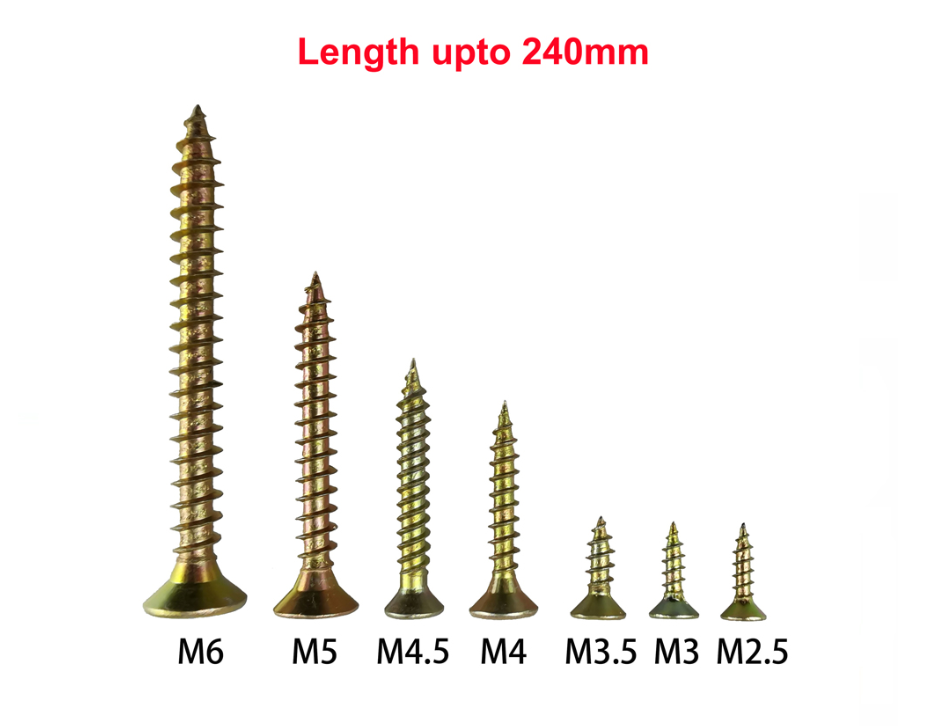Optimal Hole Size for Self-Tapping Screws in Plastic Applications
Understanding Self-Tapping Screw Hole Size for Plastics
When it comes to fastening materials, self-tapping screws have become a popular choice, especially when working with plastics. These specialized screws create their own mating thread when driven into a material, eliminating the need for pre-drilled holes. However, to achieve an optimal fastening performance and prevent damage to the plastic, it is crucial to understand the appropriate hole size for these screws. This article delves into the intricacies of self-tapping screws, the significance of hole size, and the best practices for working with plastics.
What are Self-Tapping Screws?
Self-tapping screws are designed to make their own threads in materials without the necessity of a tap or die. These screws function by forming a tight fit as they are driven into the substrate, creating a robust joint. They are often used in applications where traditional screws might not provide the same level of security or ease of use, such as in thin-walled materials or when dealing with softer substrates like plastics.
Importance of Hole Size
The hole size is a critical factor in ensuring a successful and durable fastening with self-tapping screws. An improperly sized hole can lead to a range of issues, such as
1. Insufficient Grip If the hole is too large, the screw won't create a secure thread, leading to a loose connection that can fail under stress or strain.
2. Cracking or Splitting Conversely, if the hole is too small, the screw may exert excessive force on the plastic, causing it to crack or split. This is especially significant in brittle plastics or when using large diameter screws.
3. Misalignment The size and alignment of the hole also play a role in ensuring that the screw is driven straight. A misaligned screw can result in uneven load distribution and increase the risk of failure.
Determining the Right Hole Size
To find the correct hole size for self-tapping screws in plastics, several factors must be considered
1. Screw Diameter The diameter of the screw is a primary consideration. Generally, a hole that is about 75% of the screw's diameter is ideal for creating the necessary thread while allowing for some material flexibility.
self tapping screw hole size for plastics

2. Material Thickness The thickness of the plastic being joined will influence hole size. Thicker materials may require a larger hole to accommodate heat and potential expansion due to friction during installation.
3. Type of Plastic Different types of plastics have varying properties. For example, softer plastics may require a slightly larger hole to minimize the risk of splitting, while harder plastics can often accommodate a tighter fit.
4. Application Requirements Consider the end use of the assembly. If it will undergo significant stress, opting for a slightly larger hole might ensure better grip and allow for adjustment.
Best Practices for Installation
To further enhance the fastening process with self-tapping screws in plastics, follow these best practices
1. Pilot Holes Consider pre-drilling a pilot hole, especially in brittle plastics. While self-tapping screws can work without one, pilot holes help guide the screw and reduce the risk of damage.
2. Correct Speed and Torque Using the right speed and torque settings on your power tools can prevent overheating and damage to the plastic. A slow and steady approach is often more successful than a rapid insertion.
3. Cleaning the Area Ensure that the area around the hole is clean and free from debris. Dirt and dust can create resistance and affect the screw’s performance.
4. Testing When in doubt, test the screw in a piece of scrap material before final assembly. This will help gauge the effectiveness of the hole size and prevent costly mistakes.
Conclusion
The successful use of self-tapping screws in plastics is contingent upon understanding the appropriate hole size and the specific properties of the materials being used. By considering screw diameter, material thickness, and applying best practices in installation, one can ensure a secure and durable fastening. Whether you are a professional or a DIY enthusiast, mastering these aspects of self-tapping screws will enhance the reliability and quality of your projects.
-
Top Choices for Plasterboard FixingNewsDec.26,2024
-
The Versatility of Specialty WashersNewsDec.26,2024
-
Secure Your ProjectsNewsDec.26,2024
-
Essential Screws for Chipboard Flooring ProjectsNewsDec.26,2024
-
Choosing the Right Drywall ScrewsNewsDec.26,2024
-
Black Phosphate Screws for Superior PerformanceNewsDec.26,2024
-
The Versatile Choice of Nylon Flat Washers for Your NeedsNewsDec.18,2024










